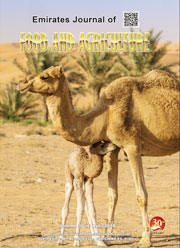Evolution of the characteristics of the hackberry (Celtis australis L.) fresh flesh stored under refrigeration conditions
DOI:
https://doi.org/10.9755/ejfa.2022.v34.i3.2830Abstract
The characteristics of the hackberry (Celtis australis L.) fresh flesh stored under refrigeration conditions during ten weeks have been
investigated. The hackberries were harvested at maturity (October) in Moratalla (Spain). The flesh was obtained using a pilot scale rotational
sieve. Sterile plastic containers of 150 grams were fully filled with the hackberry fresh flesh and stored at 5ºC. Three containers were
sampled at time intervals (initial, 1, 2, 4, 6, 8 and 10 weeks). The following parameters were analysed in the samples of hackberry fresh
flesh: physicochemical characteristics (pH, soluble solids, titratable acidity, colour, moisture and water activity) and the microbiology
(bacteria, yeasts and moulds). The results indicated that the pH decreased from 6.7 (initial) to 5.1 (10 weeks) and the titratable acidity
increased from 0.48 g ACA/100 g (initial) to 1.26 g ACA/100 g (10 weeks), while the other physicochemical characteristics were
constants during the ten weeks of refrigerated storage. The microorganisms were the key factor to stablish the acceptability of the fresh
flesh. There was only the growth of the aerobic mesophilic from 9.0 x 105 cfu/g (initial) to 3.5 x 107 (8 weeks) and 2.8 x 107 (10 weeks
of refrigerated storage). These results are to be considered for the use of the refrigerated hackberry fresh flesh as a natural ingredient at
both domestic and industrial level.










 .
. 